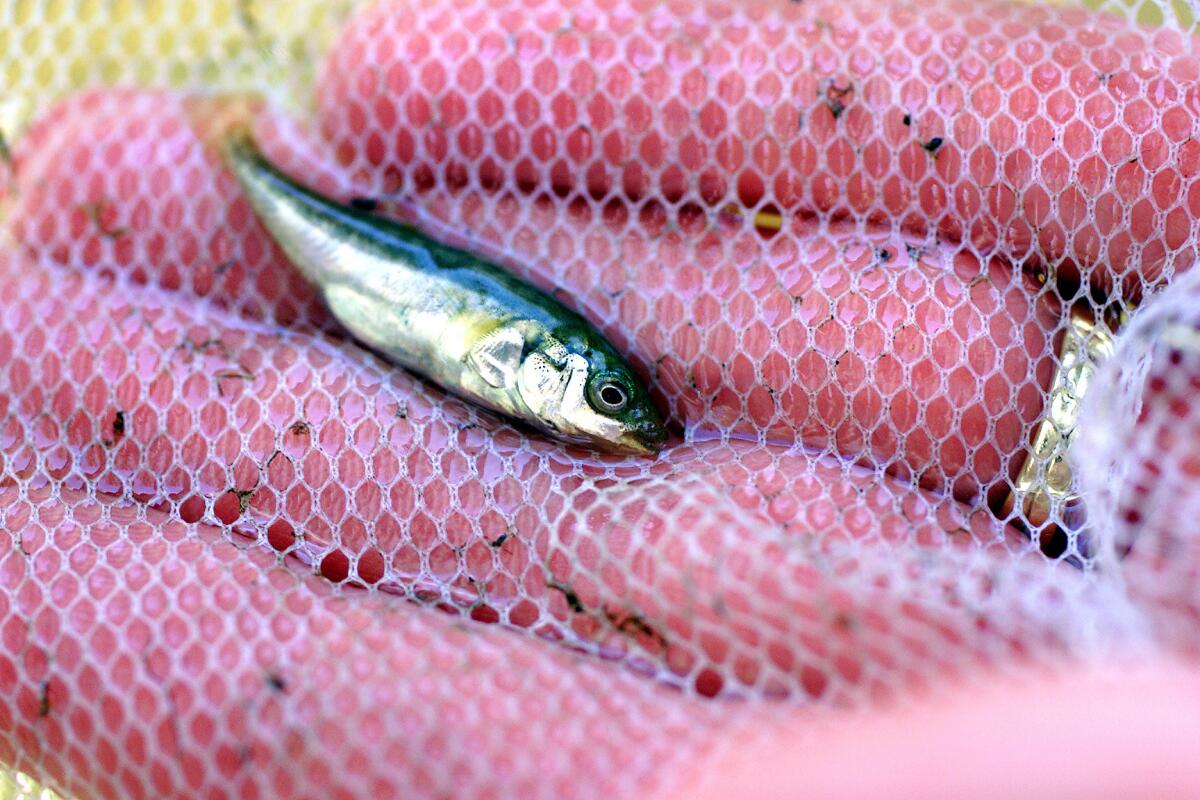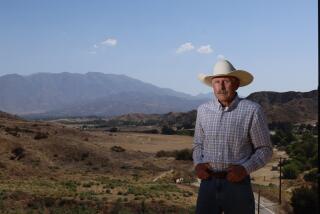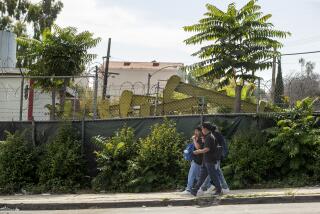Plans for a new city in the Santa Clarita Valley hit another roadblock

A plan to build homes, stores, golf courses, schools and more was approved by L.A. County supervisors 12 years ago. The area is seen above in 2011.
For two decades, the Newhall Land & Farming Co. has envisioned a new city rising in the foothills north of Los Angeles.
Situated on nearly 12,000 acres along the Santa Clara River, the planned community would house 58,000 people and offer stores, golf courses, schools and recreational centers. Los Angeles County’s elected supervisors approved the project 12 years ago, prompting experts to declare that the Santa Clarita Valley would soon be home to other major developments.
A mammoth, 5,828-page environmental impact report won court approval a year ago, and a Newhall official declared that the project had been vindicated.
But the plans hit a major roadblock Monday when the California Supreme Court rejected the environmental report, a decision that was expected to further delay the project — one justice said it might add years — but not kill it.

Marlee Lauffer, then with the Newhall Ranch area developer, stands with environmental reports and other permits for the development in 2011.
The court said the environmental report failed to buttress its conclusion that the development would not significantly affect greenhouse gas emissions, which cause climate change. Also, the court said, it illegally allowed for the capture and relocation of the unarmored threespine stickleback, an endangered freshwater fish.
The ruling, coming after years of fighting between environmentalists and the company, provided new guidelines for all developers trying to win state permits for big projects.
Newhall Land & Farming said in a statement Monday that it would continue to pursue the project. “We remain committed to realizing the vision of Newhall Ranch and the significant benefits it promises for the economy and future of Los Angeles County,” the statement said.
Opponents called the court action a “severe blow” to the project’s future.
“This ruling presents a real problem for the development because it can’t roll forward with the same plans,” said John Buse, an attorney for the Center for Biological Diversity, which sued the state and the developer.
“It will take additional environmental analyses and meaningful changes in the project to get around some of the concerns that the court has raised,” Buse said.
Lynne Plambeck, president of the Santa Clarita Organization for Planning and the Environment, called the decision timely, given the heightened attention to climate change around the world, including at talks being held in Paris.
“Land use is going to be one of the major generators of greenhouse gases, in this type of urban sprawl project,” she said.
Justice Kathryn Mickle Werdegar, writing for the court, said the environmental impact report failed to provide sufficient evidence that the project would not affect greenhouse gas emissions.
Without more evidence, “decision makers and the public are left with only an unsubstantiated assertion that the impacts — here, the cumulative impact of the project on global warming — will not be significant,” Werdegar wrote.
Just because a project is designed to meet high building efficiency and conservation standards “does not establish that its greenhouse gas emissions from transportation activities lack significant impacts,” she wrote.
The report also called for trapping and relocating the stickleback, but the court said state law bars the relocation of a protected species as a mitigation measure.
“Hunting and killing animals might sometimes be necessary as a conservation measure, for example, to obtain biological samples or to relieve a dangerous local population pressure,” Werdegar wrote, “but one struggles to imagine the circumstances in which a ... document would propose mitigating a project‘s adverse impacts on a fully protected species by killing or otherwise intentionally harming members of the species.”
Two of the court’s seven justices dissented.
Justice Ming W. Chin said the environmental impact report could be fairly easily revised but complained the litigation would delay the project by years at a time when the state faces a housing shortage.
“Delay the project long enough and it has to meet new targets, and then perhaps new targets after that,” Chin wrote. “All this is a recipe for paralysis.”
Justice Carol A. Corrigan agreed with most of the ruling but said the developer should not have to provide more detailed information about greenhouse gas emissions.
The court ruled in a lawsuit brought by opponents of the project against Newhall Land & Farming and California’s Department of Fish and Wildlife. A spokesman for the agency said its attorneys were still reviewing the decision.
Newhall Ranch, about 40 miles northwest of downtown Los Angeles, inflamed some Santa Clarita Valley residents and environmental groups and divided elected officials. Nearly seven years of debate preceded its approval by the Board of Supervisors.

The California Supreme Court on Monday rejected the environmental impact report for the massive Newhall Ranch development northwest of Los Angeles. Justices said the report failed to fully consider the project’s impact on greenhouse gas emissions and for not adequately protecting the endangered unarmored threespine stickleback, above.
Over the years, courts have ruled for and against the project, and two federal agencies have butted heads. At one point, Los Angeles prosecutors investigated allegations that the company was destroying the San Fernando Valley spineflower. The investigation ended when the developer agreed to create a 64-acre preserve for the plant.
Stephanie Pincetl, director of the California Center for Sustainable Communities at UCLA, said that in some ways Newhall Ranch is an anachronism because it was conceived so long ago, and environmental regulations and public attitudes have since changed.
“There’s a disconnect that’s occurred between what we know now about the impacts of land development and when all of this was proposed, and state regulations and goals,” she said.
But Travis Longcore, an assistant professor of architecture and spatial sciences at USC, said Newhall Ranch is not the last of its kind.
“Unfortunately, there are other envisioned projects of this scale that are on the horizon,” he said. One such project is a major planned development in the L.A. County portion of Tejon Ranch, which straddles the Los Angeles and Kern county line.
------------
FOR THE RECORD
Dec. 1, 9:47 a.m.: An earlier version of this article referred imprecisely to the location of a large planned development in Tejon Ranch. The project is in the Los Angeles County portion of the ranch.
-----------
Longcore said the California Supreme Court’s decision in the Newhall Ranch case carried particular weight because courts often give a “high degree of deference” to analysis by state agencies. But he said it’s unclear what the ultimate effects of the decision on the project’s environmental report will be.
“Sometimes things just get slowed down, and you’re not sure if it leads to an end game that increases the public benefit,” he said.
Twitter: @mauradolan, @louissahagun, @sewella
ALSO:
Skid row tenants accuse landlord of trying to drive them out of building
Ex-L.A. County sheriff’s deputies sentenced to prison for beating of jail visitor
Man killed by skateboard at O.C. Starbucks was convicted of sex crime in 2012
More to Read
Sign up for Essential California
The most important California stories and recommendations in your inbox every morning.
You may occasionally receive promotional content from the Los Angeles Times.













